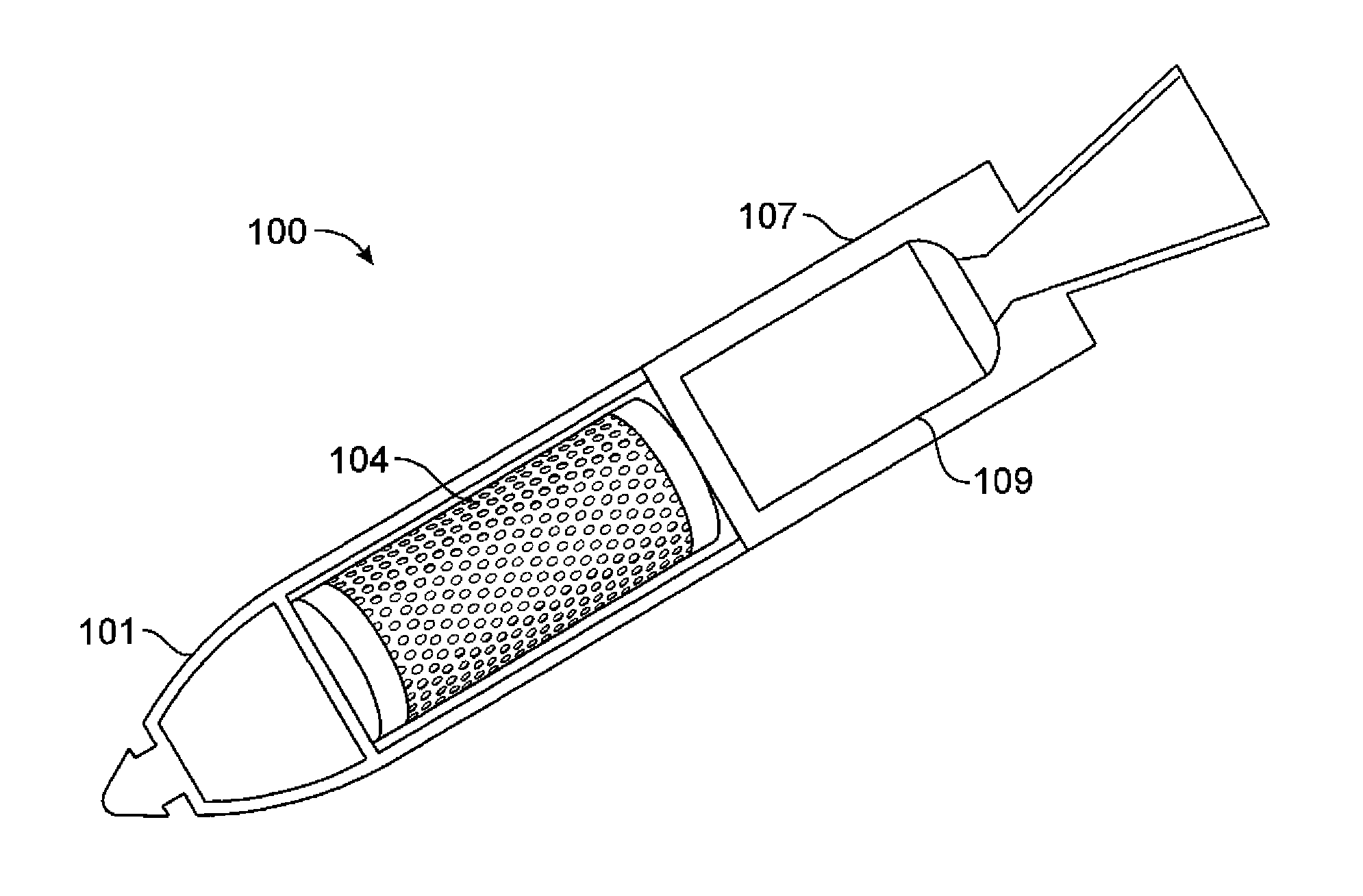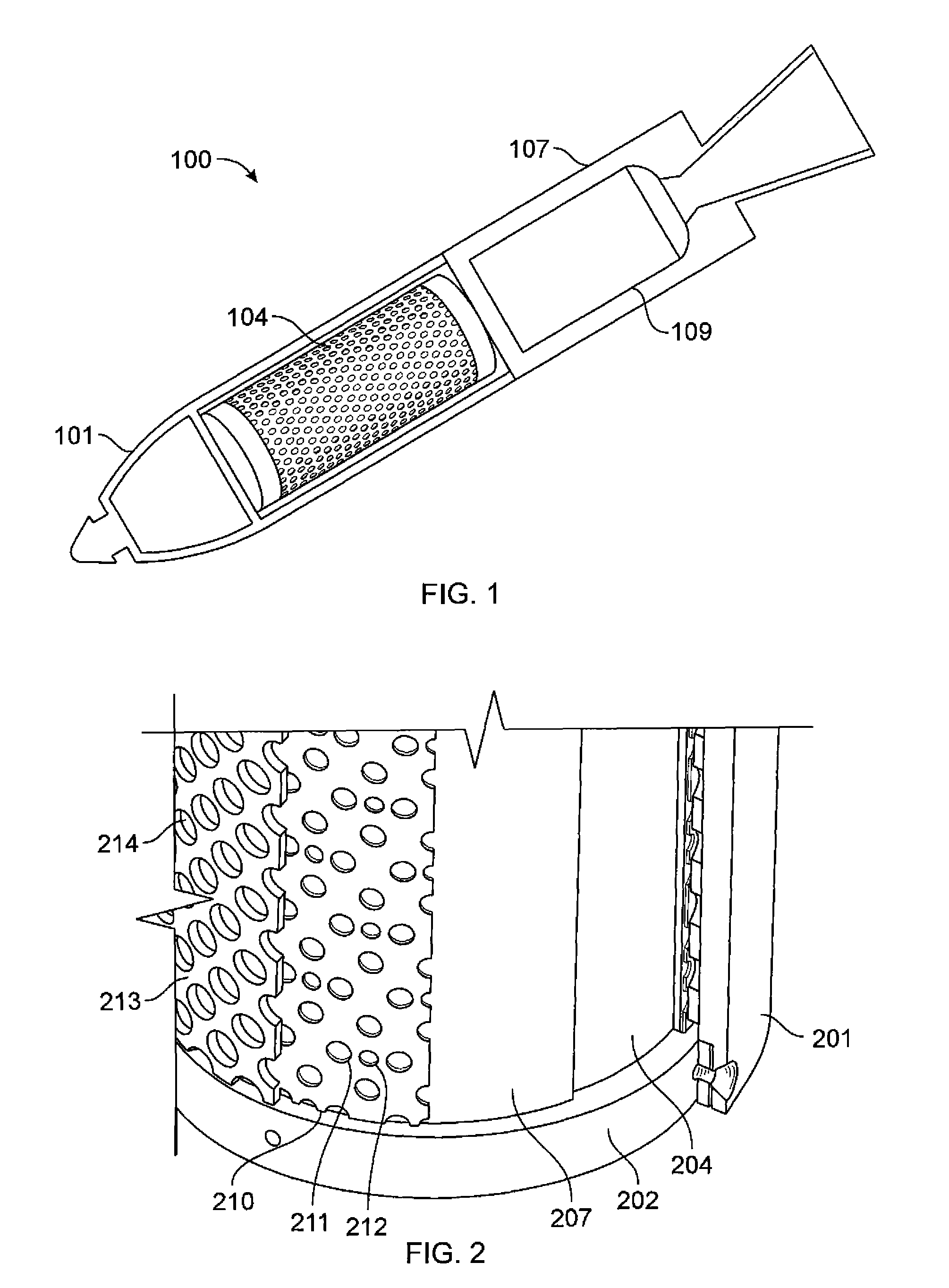Selectable lethality warhead patterned hole fragmentation insert sleeves
a technology of patterned hole and insert sleeves, which is applied in the direction of fall bombs, ammunition projectiles, weapons, etc., can solve the problems of increasing logistics and supply, and increasing the cost of materials
- Summary
- Abstract
- Description
- Claims
- Application Information
AI Technical Summary
Benefits of technology
Problems solved by technology
Method used
Image
Examples
Embodiment Construction
[0027]In FIG. 1, there is shown a subject round 100 which might employ the invention. Round 100 has a fore section 101, an aft section 107, and a propulsion means 109. Behind the fore section is a warhead 104 section, which warhead includes this invention. Warhead 104 is shown in enlarged partial cutaway views in FIG. 2. A pair of circular shaped base elements 202 serve as bookends, in between which are mounted several cylindrically shaped elements. These begin innermost with a more or less solid cylindrically shaped (explosive billet), main charge 204. Next surrounding the main charge 204 is a more or less hollow cylindrical sheet metal shield 207(an explosive containment sleeve). Next surrounding the metal shield 207 is a more or less hollow cylindrical sheet metal inner sleeve 210. Inner sleeve has a first pattern of relatively small holes 212 punched there through (which holes may be of equal size to one another, or not), and a second pattern of relatively larger holes 212 punch...
PUM
 Login to View More
Login to View More Abstract
Description
Claims
Application Information
 Login to View More
Login to View More - R&D
- Intellectual Property
- Life Sciences
- Materials
- Tech Scout
- Unparalleled Data Quality
- Higher Quality Content
- 60% Fewer Hallucinations
Browse by: Latest US Patents, China's latest patents, Technical Efficacy Thesaurus, Application Domain, Technology Topic, Popular Technical Reports.
© 2025 PatSnap. All rights reserved.Legal|Privacy policy|Modern Slavery Act Transparency Statement|Sitemap|About US| Contact US: help@patsnap.com



